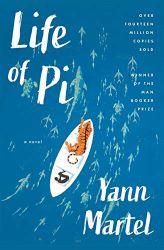
"Life of Pi" by Yann Martel recounts the major events of Pi's life before going into detail about him being stranded on a lifeboat with a tiger. It has frequent anecdotes about zookeeping and religion, especially near the beginning. The main character, Pi Patel, is an extremly likable main character. Though he is not particularly colorful or eccentric, his devotion to God and resilience make the audience instantly emphasize with him. Richard Parker, the tiger, is also made interesting. Though he doesn't do anything out of the realm of possibility, it's always left unclear how he's going to respond to the current situation. The rest of the characters are not particularly deep, but they all serve their purpose.
The plot is fairly simple, focusing more on describing Pi's struggle in detail than twists and turns. Sitting on a boat for seven months is hard to make interesting, but this book rises to the occassion. Every change in circumstance is explored, and Pi has to respond in creative ways. In between the speeches about how to train a tiger and why a hyena is dangerous, there are themes about faith that are masterfully done. While I can't say I agree with everything that's said about religion, I do appriciate how it is explored.
I would reccomend this book to animal lovers, people who enjoy survival stories, and anyone looking for a unique story that will keep them hooked.
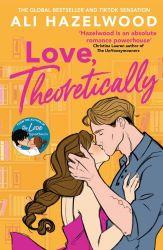
Okay, so the plot may be a little silly. A desperate adjunct physics professor, Elsie Hannaway, makes up for her pathetic paycheck by becoming people’s fake girlfriend. Does she enjoy her jobs? No. During the day, she deals with pathetic and entitled college students who couldn’t care less about physics. At night, she people-pleases to make enough to live. All while living in a probably rat-infested apartment. Whoever said academia was easy? And when she finally might get an actual well-paying job at MIT, she runs into Jack Smith, the older brother of her favorite client. Who may or may not think she works at a library?
That being said, the classic enemies-to-lovers trope and the quirky, witty characters complement the plot perfectly. The chemistry between Jack and Elsie is palpable. Frankly, Love, Theoretically, brings out the uncontrollable laughter and wholesome feelings everyone needs. However, this is definitely not my favorite Hazelwood book, and out of all the protagonists of her other books, Elsie just didn’t make the same spark. Throughout the whole book, Elsie needs constant approval from those around her, and despite being a wonderful, smart person, she lacks self-esteem. And I mean, I get it; some people have trouble with self-esteem, but Elsie’s people-pleasing tendencies are taken to too much of an extreme. And Jack, the most wholesome, caring person, sends mixed signals the whole book. The “you don’t like me” phase was too drawn out and, at times, annoying. Still, I enjoyed the light, pleasant read like always.
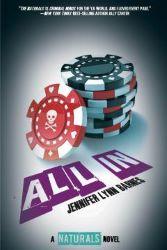
All In is the third book in The Naturals series. It takes place in Vegas instead of Washington D.C. and is actually focusing on a main secondary character instead, Sloane. The Naturals investigate a series of murders that take place in casinos around Las Vegas and learn that they may run deeper than they thought.
I really liked this book in the series. I liked how we got a story focusing on a secondary character instead of just focusing on Cassie like in the first two books. However, this book was longer than the other books and got a little bit boring in some parts, which is why I rated it a three stars. It was a really good and interesting story though and I’m looking forward to continuing the series!
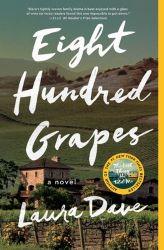
"Eight Hundred Grapes" by Laura Dave is an exceptional novel that effortlessly earns a well-deserved 5-star rating. Set against the picturesque backdrop of a California vineyard, the story intricately weaves together themes of love, family, and self-discovery. Laura Dave's storytelling prowess shines through, creating a narrative that is both emotionally resonant and utterly captivating.
The vineyard setting adds an extra layer of charm and uniqueness to the narrative, creating a vivid backdrop that complements the story's themes. The novel explores the complexities of family dynamics, the choices we make, and the impact these decisions have on our lives.
What sets "Eight Hundred Grapes" apart is its ability to balance romance, drama, and introspection seamlessly. Laura Dave's writing style is engaging, pulling the reader into the lives of the characters and making the book difficult to put down. Overall I found "Eight Hundred Grapes" to be a literary gem, offering a rich and satisfying reading experience that warrants the highest praise.
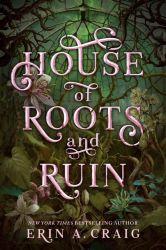
House of Roots and Ruin is an intriguing sequel to the popular novel House of Salt and Sorrow by Erin Craig. The previous novel primarily focused on the Thamus girls, with a particular emphasis on Annaleigh, as they delved into the mystery surrounding the death of their sister, Euliea. In contrast, the story in House of Roots and Ruin revolves around Verity, the youngest Thamus sibling.
The plot begins with Verity's journey to the mainland, where she visits Chantiule and Bloem. During her stay there, she receives a commission to paint a portrait of Alexander, the son of the wealthy Laurent family. However, as she spends more time in the family's mansion, she senses an underlying air of uncertainty and becomes curious about the family's enigmatic past.
As the narrative progresses, Verity uncovers several buried secrets that the family has been hiding, leading to betrayal and sparking chaos within the manor. She grapples with accepting her ability to see ghosts, which she had initially rejected. However, she eventually learns to harness her gift to uncover the Laurent family's secrets.
House of Roots and Ruin is an engrossing novel that captivates readers and keeps them on the edge of their seats. The author successfully weaves together a complex and suspenseful plot that explores themes of betrayal, loss, and family dynamics. The book is a must-read for anyone who enjoys House of Salt and Sorrows and those who are fans of the mystery and fantasy genres.
The book in question is an enthralling and captivating read that is a perfect choice for anyone who is just starting in the fantasy genre and wants to try out some mystery books. The plot of the book is structured in a way that keeps the reader on the edge of their seat as it advances with each chapter. The book is full of unexpected twists and turns, which adds to the overall excitement and thrill of the read.
One of the notable aspects of the book is how the story moves back and forth yet still manages to stay in line with how the story ends. This aspect of the book keeps the reader engaged and intrigued till the very end. The book is well-written and easy to follow, making it a perfect shallow swim for anyone new to the genre.
The book balances fantasy and mystery perfectly, making it a thrilling and exciting adventure for readers. The book's overall quality and the balance of its elements make it a perfect recommendation for anyone looking for a great read in the fantasy-mystery genre.
8th grade

After all the events that took place six weeks ago, Cassie Hobbes is back to solving cold cases for the FBI. However, when a new killer arises and is showing techniques just like her friend Dean’s father, Cassie is thrown into a whole new world of detective work and solving cases.
I thought this was a great sequel to the Naturals series. Jennifer Lynn Barnes did a great job at revealing new plot twists and describing the specific ways that the Naturals work. I also enjoyed the way she kind of dumbs the cases down and makes it easy for teenagers or any reader to understand.
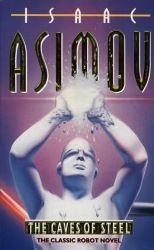
As someone who generally stays away from science fiction books, I was pleasantly surprised by this venture outside my comfort zone. Elijah Baley is the main character, living thousands of years in the earth's future. In this time period, robots have become commonplace and other planets have been commonplace. Tension has grown between earth dwellers and the residents of the other planets (referred to as spacers). There are also concerns about the increasing number and sophistication of robots. Elijah, though less extreme than many of his colleagues, is not immune to this prejudice, and is less than happy when he has to team up with R. Daneel Olivaw, a spacer robot, to solve a homicide.
The characters are not deep or complex, but they are consistent and interesting. All characters have a purpose in the story, and most of them change in some way by the end. Elijah is likable, perhaps especially so because he's allowed to fail. He's shown to be incorrect in many of his initial beliefs, and makes many false assumptions, but he retains good qualities throughout it all. R. Daneel is an interesting take on the robot archetype. Though he's shown to be effective in his job and capable of change, he lacks essential human qualities that Elijah must make up for. The side characters all have clear motivations, personalities, and are interesting without being obtrusive.
The plot strikes a balance between complex and easy to follow. There are a great deal of plot twists and dead ends, but the story takes its time and allows the reader to process everything. I hope I re-read this book one day, so I am able to look for clues to the culprit that I might have missed the first time around.
I have no overt critiques. The only bad thing I can say about this book is that it's not a deep philosophical experience. There are tcertainly hemes, but the book focuses more on excitement and intrigue than anything else. I would reccomend this book to sci-fi fans, and anyone looking to get into the genre.
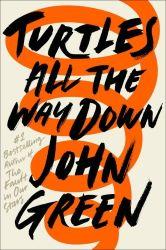
"Turtles All the Way Down" is a young adult novel written by John Green. The story follows the life of Aza Holmes, a 16-year-old girl dealing with obsessive-compulsive disorder (OCD). Aza, along with her best friend Daisy, becomes involved in the mystery surrounding the disappearance of a billionaire named Russell Pickett. As they investigate, Aza also navigates the challenges of her mental health and relationships.
In my opinion, "Turtles All the Way Down" is a compelling and emotionally resonant novel, earning my rating of 3/5. John Green brings depth and authenticity to the portrayal of Aza's struggles with OCD, providing readers with a unique and empathetic perspective. The exploration of friendship, love, and the complexities of mental health adds layers to the narrative. The book's strength lies in its realistic characters, poignant storytelling, and the author's ability to address important themes with sensitivity. While some may find the pacing or plot elements challenging or dull, the overall impact and the way it tackles mental health make it a worthwhile and thought-provoking read.
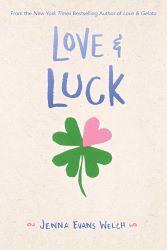
"Love & Luck" by Jenna Evans Welch follows the story of Addie, who, while traveling through Ireland, discovers a guidebook. As she embarks on a journey with unexpected companions, the novel explores themes of love, friendship, and self-discovery against the picturesque backdrop of Ireland.
In my opinion, "Love & Luck" failed to live up to expectations, earning a 1/5 rating. Despite the appealing premise, the execution fell short, making the overall experience less than satisfying. The narrative struggled to capture the my interest, and the characters lacked depth or development. Additionally, the storytelling or pacing issues contributed to the feeling that the book wasn't worth the time I invested.
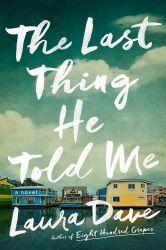
"The Last Thing He Told Me" by Laura Dave is a gripping thriller that follows the life of Hannah Hall after her husband mysteriously disappears, leaving behind a note with the cryptic message, "Protect her." As Hannah unravels the secrets of her husband's past, she discovers hidden truths and forms an alliance with his teenage daughter. The novel masterfully blends suspense with emotional depth, exploring themes of love, trust, and the complexities of family dynamics.
In my opinion, "The Last Thing He Told Me" is a well-crafted and engaging story, deserving of a 4/5 rating. Laura Dave skillfully weaves a compelling narrative, keeping readers on the edge of their seats with unexpected twists and turns. The characters are vividly drawn, and the emotional journey they undergo adds layers to the plot. While the storytelling is strong, a bit more depth in certain explanations could enhance the reader's understanding of certain character motivations and plot intricacies. Nonetheless, the book succeeds in delivering a satisfying blend of mystery, emotion, and intrigue, making it a highly enjoyable read!
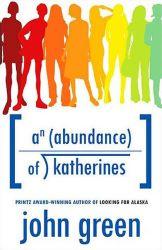
"An Abundance of Katherines" by John Green revolves around the quirky and intellectually gifted protagonist, Colin Singleton, who finds himself in a cycle of heartbreak. Having been dumped by 19 girls, all named Katherine, Colin sets out on a road trip with his best friend, Hassan, in an attempt to overcome the repetitive pattern in his love life. Along the journey, the novel explores themes of self-discovery, friendship, and the complexities of relationships. Green weaves in mathematical concepts and footnotes, adding an intellectual layer to the narrative as Colin attempts to create a formula predicting the duration of romantic relationships.
In my opinion, the novel falls short in execution. The heavy reliance on mathematical discussions, while unique, can be overwhelming or dull for readers not inclined towards that subject. The repetitiveness of the plot, with the central theme of Colin's romantic struggles, becomes a hindrance, making the story feel stagnant at times. Despite some moments of humor and insight, the overall experience may leave readers desiring more depth and variety in the narrative.
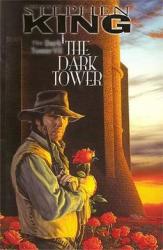
For a series that spanned over two decades, it’s nice to see that The Dark Tower ends on a titular high note. Other series may lose steam or fade to mediocrity as the stories to tell become less interesting. Or the author dies. While this series narrowly avoided this fate, the meta subplots in the last few books were well out of the way for the grand finale that is The Dark Tower. I’m almost disappointed that more of the books in the series weren’t like this, since there were actual stakes involved.
I don’t normally think of Stephen King as an “action” writer, but the fight sequences in this book were absolutely superb. These enemies had the “final boss” gravitas that made the battles so entertaining to read. That there was an incredible new superpower introduced in this book makes me wish we had more stories about that character since it was such a great ability. It’s always a mark of a great ending that I almost want to keep reading to see what else happens in this world—even with all the loose ends tied up.
King definitely understood that he was never going to write the most satisfying ending for the Roland saga since it had built up for 20+ years. His solution was a great way to both leave it as the best ending we’d ever imagine while also providing a satisfactory conclusion to the Gunslinger finally arriving at the Dark Tower. That there were as many happy endings in this book as there were made the experience of saying goodbye that much more bittersweet. The Dark Tower isn’t a perfect series, but it’s solid from start to glorious finish.
The best ending that the Dark Tower series could ask for, I give The Dark Tower 5.0 stars out of 5.
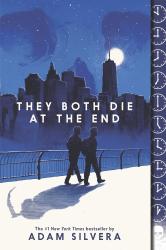
This book is amazing! The story will honestly warm your heart and keep you on your toes. The characters' development is done so beautifully and you definitely get an idea about how important life is. Don't waste another moment and please read this book!

Stephen King has written most of the horror I’ve read. In deciding to branch out from the master of the genre, I saw the cover for this book in the listing of audiobooks for my library’s reader app and thought it looked interesting. While the horror here was more body/gross-out horror—which I didn’t have any issue with—there are other, deeper problems with this book. I’ll grant that in terms of audiobooks, it was an interesting recording with the sound effects and “alien voice” bits. However, I can’t say I recommend this book based on those merits alone.
Perhaps this is an artifact of the times, but a book that came out in 2008 has not aged well at all. First, is the abundance of “men writing women” tropes that not only minimize the female characters to minor roles but doesn’t consider that perhaps not everything has to be about sex. Furthermore, while the main character was a person of color, there were a lot of negative stereotypes and mildly hidden racism that came through. Reading this book made it feel like I had gotten inside the head of a “bro” guy, and it was pretty cringe.
I think the biggest problem was that this book was too cavalier with its “gross-out” factor without having enough suspense to justify the constant violence. When I didn’t care about any of the characters and the vignettes that split off to explore one-shot characters didn’t give me enough time to be empathetic for them, then who cares about the violence that happens to them? More often than not, the pacing felt so slow that I had to check how much time was left, hoping that at some point it would go faster.
A horror story that was scary for reasons other than its violence, I give Infected 2.0 stars out of 5.

Brave New World presents a uniquely disturbing dystopia- but unfortunately, that is where its strengths end. The plot, aside from the setting, is so loosely strung together that a main character, main storyline, or even main theme is unclear. The story meanders from one under-developed character to the next and, without the support of a vivid setting, the novel would crumble. I admire the creativity behind the premise and the craft behind the writing style, but the plot simply lacks. The novel is only worth reading to delve into the vivid world that Aldous Huxley created.
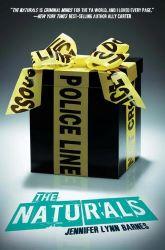
The Naturals by Jennifer Lynn Barnes is about a teenage girl who gets enlisted in an FBI program, The Natural Program where she and other “Naturals” work to solve cold cases. I really liked the premise of this book. The teenagers are basically prodigies on reading people or reading crime scenes in a way adult agents can’t do . The protagonist, Cassie Hobbes, for example is really good at reading people and how they might react to situations. Others members are good at telling lies, knowing statistics or math, and reading emotions. I really enjoyed the found family trope with Cassie and the other Naturals and am hoping to see more of that as the series moves forwards. This first book while really good, kind of just felt like a beginning couple episodes to a tv show. We’re still learning about the characters, the program, and the main plot of the story as a whole. I will say it did encourage me to continue with the series and figure out how the Naturals react with other challenges and problems that come with being apart of the FBI.
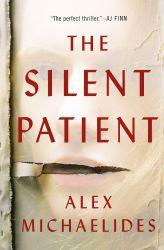
Enthralling, captivating, and unexpecting are all words that can be used to describe The Silent Patient by Alex Michaelides, an irresistible and stunning psychological thriller. The suspense from the first chapter is palpable, and the skillfully laid out plot leaves the reader second-guessing until the very end. It is truly, in the full sense of the word, a thriller, full of curveballs and red herrings, multidimensional realistic characters, thick, palpable emotions… The list goes on. Michaelides’ wonderful writing style and the perfect plot pace were just the cherry on top.
The plot is utterly outstanding. From the first words, the protagonist, Alicia Berenson, shocks the reader with an unspeakable act of violence: she killed her husband. Why? That is the sole question I found myself asking the whole book. An even bigger question: why did she fall silent after the murder? And will she ever speak again? An added layer of complexity is her new psychotherapist, Theo Faber, who is anything but perfect. Theo’s obsession with Alicia raises another question: why is he obsessed? What are his motivations? As the plot unfolds, the mystery behind Alicia’s silence uncovers vast psychological trauma and the lies of her close friends and family. As the plot thickens, Michaelides creates a haunting setting as he delves into the intricacies of the human mind. It becomes evident that this novel is well-thought-out and plentifully researched to draw the reader into a realistic setting. Honestly, I have no criticism of The Silent Patient and could not recommend it enough for anyone looking for a suspenseful plot-twisty psychological thriller.

After the disappointment of Golden Son , I was leery of starting on the last part of the Red Rising trilogy. Oddly enough, this book was actually somewhat interesting, but in a way that made the first two books seem unnecessary. There was definitely a lot of action in this book, which is part of what made it more exciting than the others. And as far as a book that’s supposed to wrap up a trilogy, Morning Star certainly doesn’t leave too many loose plotlines when it ends. I still think the world-building is forced with all the Roman imagery and sci-fi tech, but at least now it’s over.
As with the previous books, I still had trouble with keeping track of all the different characters and their motivations. The main character was pretty straightforward (if not bluntly so) and his love interest just felt like she wanted to do whatever he was doing. Everyone else had weird names that made it hard to track who was who and which side they were on. At least the plot was simple enough that I could follow what was happening.
The biggest question that came from this book was, “What was the point of trying to get into (and be rejected from) the high society?” It seems to me the only reason to have the first two books was to give the main character a love interest from a caste that was above his station. I think if it could have worked some elements of the first two books into this one, then it could stand by itself. After all, the idea of an oppressed population rising to defeat their wealthy overlords is probably the most interesting concept in this series.
A trilogy finisher that could have been a standalone book, I give Morning Star 3.5 stars out of 5.
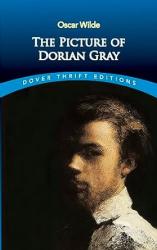
The Picture of Dorian Gray is a philosophical novel by the Irish writer Oscar Wilde. It was originally published in 1890, and soon after its publication, it became one of the best-selling books.
It circles around the doctrine of aestheticism and Oscar Wilde's role in that movement. He, along with the other writers of that movement, explained that art should not have a political or social purpose to serve, and it also has nothing to do with morality or conveying moral or sentimental messages.
The idea of "Art for the Art's Sake" played a prestigious role in Oscar Wilde's novel, which means that art needs no justification and ought only to deal with beauty. The purpose of the art is to entertain and appreciate its beauty.
"An artist should create beautiful things, but he should put nothing of his own life into them."
The tale begins with Basil Hallward, a very talented painter, making the portrait of Dorian Gray, who is sitting in front of him. Dorian Gray is a splendid young man with a beautiful nature and heart. He is also considered one of the most beautiful men in Greek mythology, like Helen of Troy. He is everything to Basil Hallward because the painter believes that this charming creature with good looks will make him a famous artist. It seems as though he is made of gold and ivory, and the curves of his lips rewrite history.
Basil Hallward makes the portrait of Dorian Gray, which seems more beauteous and charming than his own personality. When he glances at the picture, he feels jealous of his own portrait. He realizes how sad it is that I will grow old, wrinkled, and ugly, but this portrait will always remain young and lovely. As it is written in the book:
"I am jealous of everything whose beautydoesn't die. I am jealous of the portrait you have painted of me. Why should it keep what I must lose?"
Dorian Gray wishes to remain young forever. Whenever he sees his photo, sadness swallows him. He is ready to give everything for that sake, so his hedonistic nature forces him to sell his soul to the devil to get back his youth, and he also agrees that this picture will bear all his sins and doings.
As the story proceeds on, hedonism ruins him and makes him corrupt and wicked. He goes out to watch a play at the opera, where he falls in love with an actress, Sibyl Vane, not because of her beauty but because she is an excellent actress and knows very well how to please her audience. One day, he with Basil and Lord Henry go to watch her play,but unfortunately she doesn't act very well, which makes Dorian Gray furious and disappointed because art is everything to him, so he leaves her crying and in pain. After some days, she takes her life, and Dorian is responsible for that, but he doesn't think so. When he returns home and glances at the picture, he notices some changes in it. The face looks a bit pale, dark and a hint of cruelty is also seen in it. He kills Basil Hallward because he knows his secret, and Dorian is afraid that the painter might reveal to the world his real face.He sees his portrait again, and the painted face on the canvas looks sodden and unclean. The cheeks become hollow and flaccid, and the hairs lose their brightness. It gives off a monstrous look, so he decides to end it up, seizes a knife, and stabs the picture with it. There rises a cry of pian so horribly that when the servants enter the room, they see the portrait of their charming master hanging on the wall. There lies a deceased man with a knife in his heart. He looks like a monster, and all his sins can be seen on his face.With his death, the portrait returns to its original shape and looks young and attractive again.
It is a fabulous piece about the idea of art for art's sake. Oscar Wilde explains vividly that it is not the duty of art to serve society or tell others about ethics what is wrong and right. The only priority of the artist is to create beautiful things and to provide pleasure to others. The importance of art can be seen in the book:
"There is nothing that art cannot reveal or express."
"The reason I will not exhibit this picture is that I am afraid that I have shown in it the secret of my own soul."
The author warns its readers that bad external influences can exploit you ghastly. Don't let anyone overcome or make your decisions, because it happens with Dorian Gray.
Hedonistic nature is also a prestigious theme in this book. Dorian Gray is a hedonistic young man who wants to be beautiful forever without knowing that everything in this world must taste death. Don't be proud of your glory, beauty, and honor because death will swallow everything.
According to Oscar Wilde, we do everything to be famous, but once we have what we want, it no longer interests us. I don't agree with it because, for the majority of us, money, power, and fame are everything. We desire to have all this stuff, and none of us will ever want to throw it away.
In short, it's a wonderful book and contains some unique and important messages for its readers.
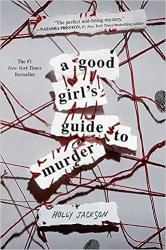
Andie Bell was murdered by her boyfriend, 5 years ago. It's a closed case. But Pippa doesn't think so. I absolutely loved A Good Girl's Guide to Murder.
The story follows Pippa Fitz-Amobi, or Pip, a 17 year-old girl whose end of year project is a solved murder case.
The "murder" of Andie Bell, and the suicide of her boyfriend that followed. Pip doesn't believe the end result of the case, and that Sal Singh, Andie's boyfriend wouldn't have murdered her.
Pip shows up at Sal's brother, Ravi Singh's door, asking for help. She tells him she doesn't think Sal did it, and wants help proving it. The rest of the book continues with Pip and Ravi doing what the police couldn't. A deep dive into Andie Bell and Sal Singh's life.
This book was very well written, and so were the other books and novella in this series. The plot twists were perfectly placed and made sense, yet not easy to guess. This was not a book to take lightly, details from the very beginning of the book would resurface.
The other books in the series connected perfectly with this one, and each page left you wanting more. There was definitely a romance subplot, as Ravi and Pip got to know each other, but it didn't take away from the mystery at any point.
Overall, I really liked A Good Girl's Guide to Murder, and would recommend it any day, whether you are just starting with mystery, or are an expert.
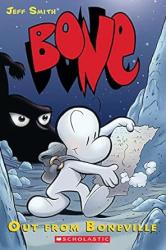
Bone is one of those comics I’ve always been aware of but haven’t gotten around to reading until now. It’s interesting how the visual style of the titular characters evokes an older style of comics, while the other characters in the world feel more modern. The storytelling runs at a pretty fast pace that kept me turning the pages to see what happens next. There’s some pretty good humor here, as well as tense situations to keep it from becoming too silly. I can definitely see the appeal and why it’s been a notable comic since its origins in the early 1990s.
My only qualm with this book has to do with the main characters. The three “Bones” feel out of place in the fantasy realm, let alone our world. It also took me a while to distinguish visually between Fone Bone and Phoney Bone, which was only aided because this book mostly follows Fone. These characters are quite expressive for their simple design, which helps. I understand their simple white design would make producing the (originally black and white) comic easier, but they’re so jarring when everything else is so detailed.
It's funny how the Japanese isekai genre has picked up in recent years, only to have been solidly pre-dated by Bone. The concept of a group of people being transported/lost in an unfamiliar fantasy world is a huge genre today. The fantasy world-building Jeff Smith does in this first volume definitely holds to a lot of fantasy tropes while also taking humorous turns that make the world unique. I’m glad I picked up the colorized version of this first volume and I’ll definitely be reading the next volume when I get the chance.
A bold take on the isekai genre in an American style, I give Bone, Vol. 1 4.0 stars out of 5.
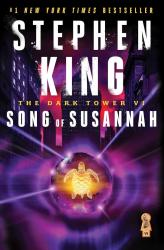
Six books into the Dark Tower series, and I'm glad that things are wrapping up. I felt Wolves of the Calla was only as good as it was because it was clearly a ripoff of The Magnificent Seven (1960). And with so many of the books in this series focusing on the men of the ka-tet, it was nice to get a book that mostly focused on Susannah's experiences. A lot of weird stuff happened in this book, but at least it laid the groundwork for the last entry in the series.
Perhaps the weirdest part of this book was its meta-narrative with Stephen King. I was a little surprised this fourth-wall-breaking move worked as well as it did. Then again, King clearly hinted that this was a possibility in the previous book in the series. Author self-inserts usually take the form of the main character living out the author's fantasies. However, literal author self-inserts are a little rarer. It also felt like King was trying to remind himself why he started on this Dark Tower series at all, which doesn't instill a lot of confidence in the reader.
I wasn't wild about the somewhat cliffhanger ending, but it didn't matter too much as I knew I could jump into The Dark Tower shortly after finishing this book. It's mostly frustrating because there are a lot of things that are cut short in this book that clearly will be resolved in the next. Song of Susannah gathered King's top ideas from his previous works, making it almost a "greatest hits" from his bibliography. That there's been some good action in books five and six of the series bodes well for the conclusion.
A meta setup for the last book of the Dark Tower series, I give Song of Susannah 4.0 stars out of 5.
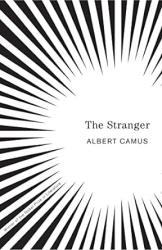
The Stranger by Albert Camus is one of the most widely read novels in the world. It was originally published in French in 1942 and then translated into English as well. After its publication, thousands of copies were sold all over the world.
The novel presents Albert Camus's theory of absurdism, which says that the whole world is useless, and he also doesn't believe in this world.
The narrator of this story kills an Arab in the desert to save his life. He is brought to court by police officers on trial. He is ready to confess his crime in front of all the people and is ready for any sort of punishment, but the jury has different intentions, and he is flabbergasted when officers start questioning him about his mother, who died a few days ago. They blame him for not weeping at his mother's funeral. He might be forgiven for his crime, but he could not be pardoned for not crying when his mother died. He is ghastly criticised by all the members of the jury because he went to the pool and watched a funny movie with his girlfriend after his mother's death. After a few days of hearings, the court announces his death sentence, and no one has tried to find the elicit facts, as they are mentioned in the text book.
"After being charged with murder, he executed because he didn't weep at his mother's funeral. "
After suffering throughout his whole life and witnessing the deplorable behaviour of others, he no longer believes in God. His heart got badly broken, and the existence of God has no importance to him anymore.
The importance of memories is another big theme in this novel. Memories are very important in life, and they last forever, even till death. I must say:
Life without memories is like a broken-winged bird that cannot fly.
When he is sent to jail, he has only the memories of his life and spends his time remembering the beautiful moments of life and the time he spent with his beloved ones. As it is written in the novel:
"I have learned that even after a single day's experience of the outside world, a man could easily live hundreds years in prison "
To conclude, the novel is a wonderful piece of literature because it explores the real events of the writer's life and contains some important lessons for others. That's why reading this book would be a good idea.
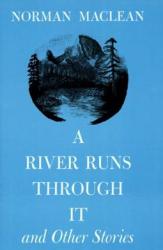
I love how books can give insight into things we might not otherwise know. How, when someone "writes what they know" in an autobiographical sense, the reader gets to experience that slice of their life. I'm not interested in fishing—in any of its styles. And yet, A River Runs Through It gave such a clear picture of what it's like to go fly-fishing that I felt like I had actually experienced it. I'm still not interested in trying it in real life, but now I feel like I get it.
Of course, A River Runs Through It isn't entirely about fly-fishing. There are other universal themes, like fatherhood, brotherhood, sonship, and unity with nature. I can also appreciate that there is a Christian tilt to the main character without being judgmental of the choices his family has made. This unconditional love speaks to what Christianity is all about. That's not to say that the actions of his family aren't frustrating to read about, it's just that going fly-fishing is something that washes away any bad blood.
While it's a quick read, A River Runs Through It doesn't need much to convey the author's genuine attitude toward life. Because it's not about the details of actually fly-fishing that reveal how knowledgeable Maclean is at the sport. There weren't any facades that tried to paint the main character as a saint. All the characters had flaws, just some were more obvious than others. An accurate examination of an individual's life says more about what they've accepted than what they wish they'd wanted to be. And perhaps being in the "natural environment" where they're the most comfortable is the whole point of this book.
A heartfelt love letter to family and fly-fishing, I give A River Runs Through It 4.0 stars out of 5.
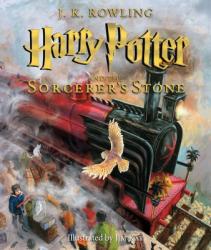
I suggest the book to people, who want to enjoy an intriguing, fast paced novel, Harry Potter and the Sorcerer's stone is the perfect book for those people.
This novel is the first of the seven famous Harry Potter books by J. K. Rowling. This book is about 11 year old Harry Potter, who receives a letter from Hogwarts, which is a school of witchcraft and wizardry.
This book is full of imagination like at one point, Harry Potter is asked to catch the golden ball, while he is flying on the broomstick. Then he stands up on the broomstick and tries to catch the golden ball unexpectedly he falls off from the broomstick and throws up the golden ball to winning the game for his team.
This book keeps you involved throughout the book.
Harry Potter and the Sorcerer's Stone is a good book to spark joy and imagination for anyone, regardless of age.
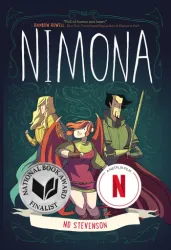
It's a rare treat to find a graphic novel with well-rounded characters, an interesting story, and an art style that has range. Even if it started as a webcomic, Nimona shows a surprising amount of depth for the medium. Sure, some of the early parts were clearly encapsulated in a serial format, but they were a quick way to introduce the characters and setting. When the story has some room to grow, it gets even better. It's definitely a page-turner, and I devoured it as fast as I could.
The heart of Nimona is its characters. Flipping the hero's journey on its head and focusing on the villain's perspective was a fun touch. Nimona's chaotic nature was a fun contrast to Lord Ballister Blackheart, who just wanted to do his villainous revenge alone. Perhaps the biggest surprise was how naturally the book handles LGBTQ+ themes. None of it felt forced or odd, even in a science fantasy setting. It was just there, with no winking nods or awkward attention brought to it. Then again, it was also a fantastic adaptation of the "enemies to lovers" trope—or would it be "lovers to enemies"?
As someone who likes to write science fantasy stories, I absolutely loved the science fantasy setting. It has all the trappings of a medieval time, just with video chats, laser guns, and dragons co-existing in a way that makes perfect sense. This is the kind of thing I can completely get behind. If anything, I hope this book inspires more writers to jump into this genre, as I desperately want to read more books like this. It's like the best parts of sci-fi and fantasy brought together in an awesome (but also deeply moving) story.
A science fantasy graphic novel with excellent characters, story, and art, I give Nimona 5.0 stars out of 5.
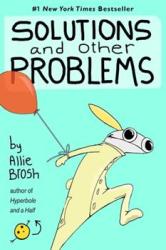
My first introduction to Allie Brosh's work—as I'm sure is the case for many—was the "all the things" meme. For those looking for more depth from these drawings, look no further than the humorous illustrated memoir, Solutions and Other Problems. I have never quite read a book like this. When I picked it up off the shelf, I was expecting a graphic novel, only to be surprised with big chunks of text between illustrations. Clearly, the best of both worlds here. You'll laugh. You'll cry. You'll be glad you read this book.
While it might be easy to discount the simple drawing style at first glance, many illustrations in this book prove to be quite exquisite. The stories themselves, which are not all silly or humorous, aid this distinction. Solutions and Other Problems subverted my expectations by being both hilarious and deeply profound. I've never read a book that had both a story about an obsessed kid stealing things from a neighbor's house and an examination of loss and depression. And yet, they both work in this context.
As these essays are deeply personal, I can say I don't particularly agree with some of the choices presented here. And that's fine. Everyone is different, and these are definitely the stories the author wanted to convey. I just don't want to endorse this book without providing the caveat that I probably wouldn't do things the way the author did them. Still, if you're going through some tough times, then perhaps this book will help break through to you with its humor while also comforting you with the idea that your feelings are valid and shared by other people.
The best half-graphic novel/half-memoir I've ever read, I give Solutions and Other Problems 4.0 stars out of 5.

Better than the Movies is a young adult rom-com about Liz Buxbaum. The story centers around Liz’s senior year and her crush that just moved into town. It’s also centered around her neighbor, who tries to help Liz get her crush to ask her to prom. I think the author did a good job at talking about Liz and her emotions. Most of the story is Liz being a rom com lover like her mom who passed away. She tries to make her life like the romcoms she and her mother enjoyed together. The romance in this book was cute, but I also enjoyed how Lynn Painter kept it solely around Liz and her emotions about her mom and senior year. The coming of age part was very realistic while also playing out kind of like a rom com that Liz loves so much. So I thought that was a clever twist.

Love on the Brain is stacked full of misunderstandings. When Bee Königswasser gets her dream job at NASA, she is ecstatic, except when she realizes her archnemesis, Levi, is her co-worker. So, who does she blame when her equipment stops working? Or when the staff ignores her? Levi. Through all of Bee’s misadventures, the reader is pulled along seamlessly and introduced into the narrative with an enviable writing style.
So here’s an equation: Romance plus STEM equals?
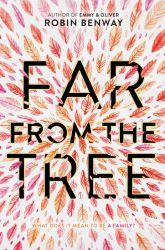
"Far From the Tree" by Robin Benway is a exploration of family, identity, and the bonds that tie people together. The book follows the interconnected lives of three siblings—Grace, Maya, and Joaquin—who are all separated and discover each other's existence and embark on a journey to understand the meaning of family. Benway skillfully intertwines the perspectives of these three characters, creating a narrative that unfolds with genuine emotion and authenticity. The story delves into themes of adoption, acceptance, and the profound impact of family connections on one's sense of self.
Awarding "Far From the Tree" a rating of 3/5 reflects my appreciation for the novel's engaging storyline and the author's adept portrayal of complex family dynamics. The characters are well-developed, and their individual struggles and growth are compelling. However, at times, the narrative can feel slightly formulaic, with certain plot points following predictable trajectories. Additionally, while the exploration of adoption is insightful, some aspects of the story may feel a bit too neatly resolved. Despite these minor critiques, Benway's ability to craft a touching narrative around the theme of found family makes "Far From the Tree" a solid and emotional read, deserving a 3 star rating.